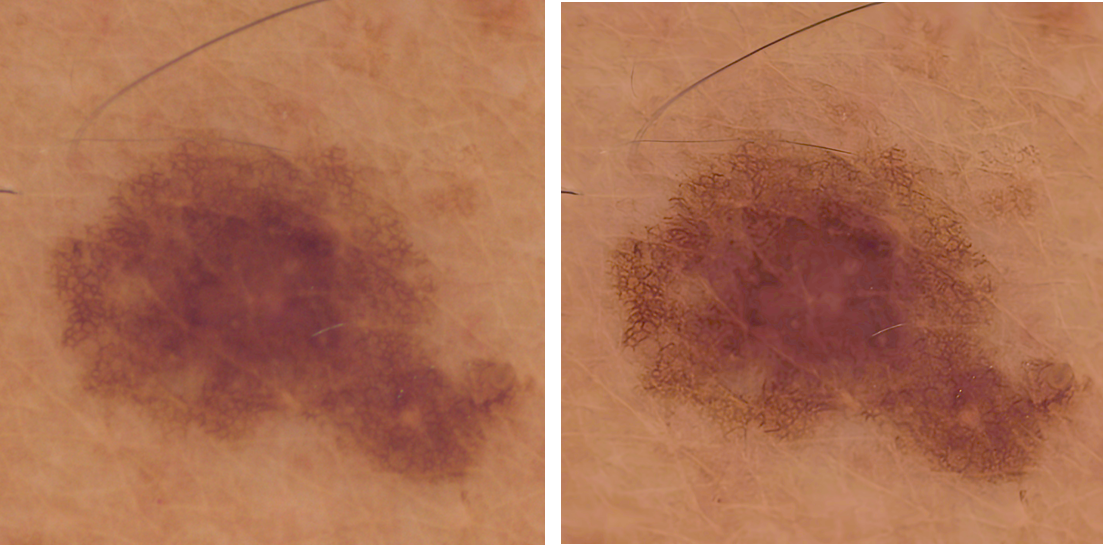Image Super-Resolution is the task of restoring a high-resolution image out of one or several lower resolution images. A simple enlargement of the image would produce a blurred result, so a special approach is needed to boost the apparent resolution and enhance image sharpness.
State-of-the-art Super-Resolution methods use deep convolutional neural network models that are trained on a large set of examples of pairs of low- and high-resolution images. Whenever available, it is optimal to use the RAW sensor image, as processed images can have artifacts that the model can learn and enhance on the Super-Resolution output.

Fig. 1 An example of applying image Super Resolution [1]. Left, original image of lower resolution up sampled using bicubing interpolation. Right, image Super-Resolution output obtained by applying the method GPEN [1] on RAW data.
Recovering sharp image details is challenging and trained deep learning models can sometimes introduce artifacts. Fig 1 illustrates an example generated by a generative adversarial network [1] that restores properly skin and mole details while preserving fidelity, although being trained on a dataset of face images.
Bibliography
[1] Yang, Tao & Ren, Peiran & Xie, Xuansong & Zhang, Lei. GAN Prior Embedded Network for Blind Face Restoration in the Wild, CVPR 2021.
